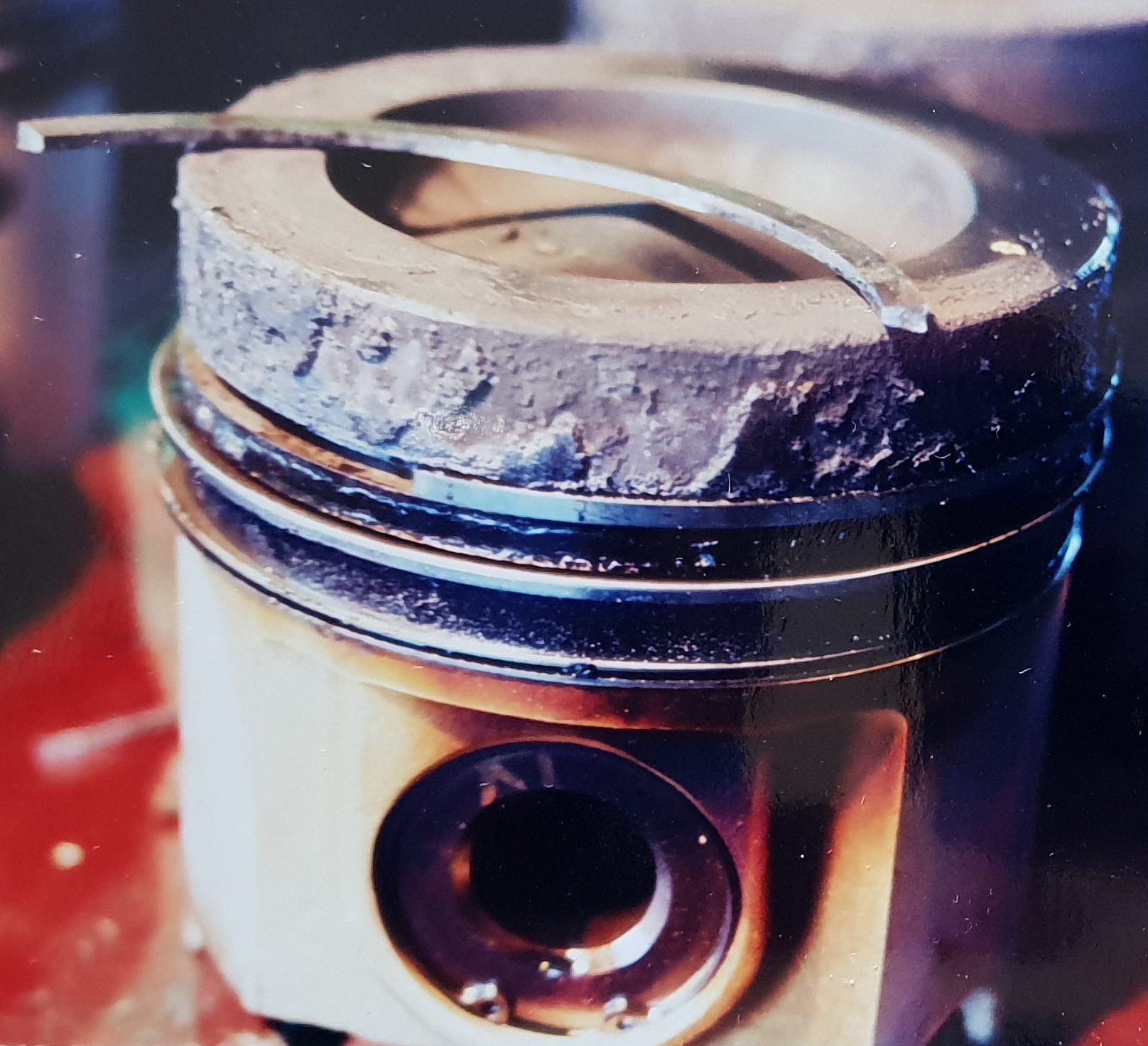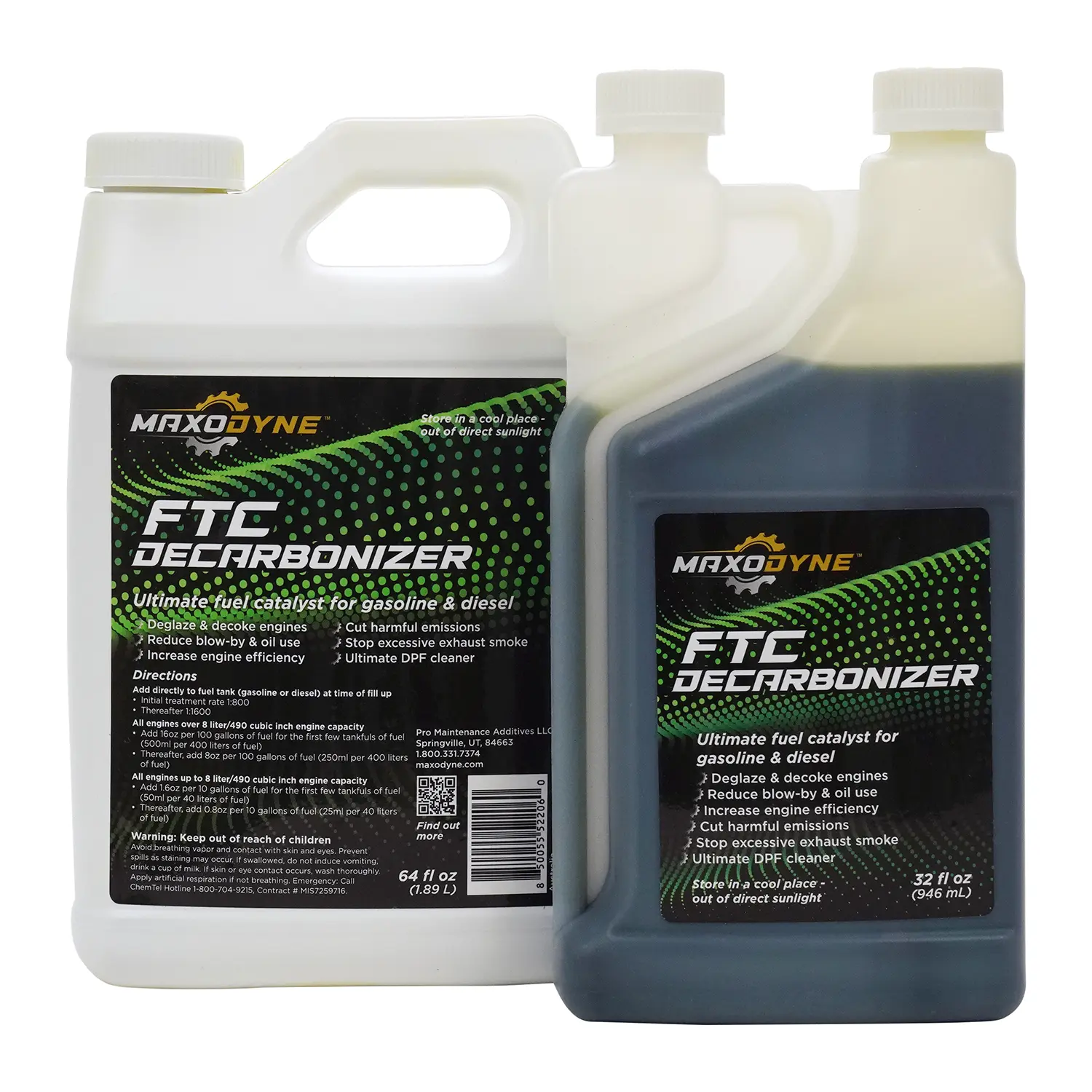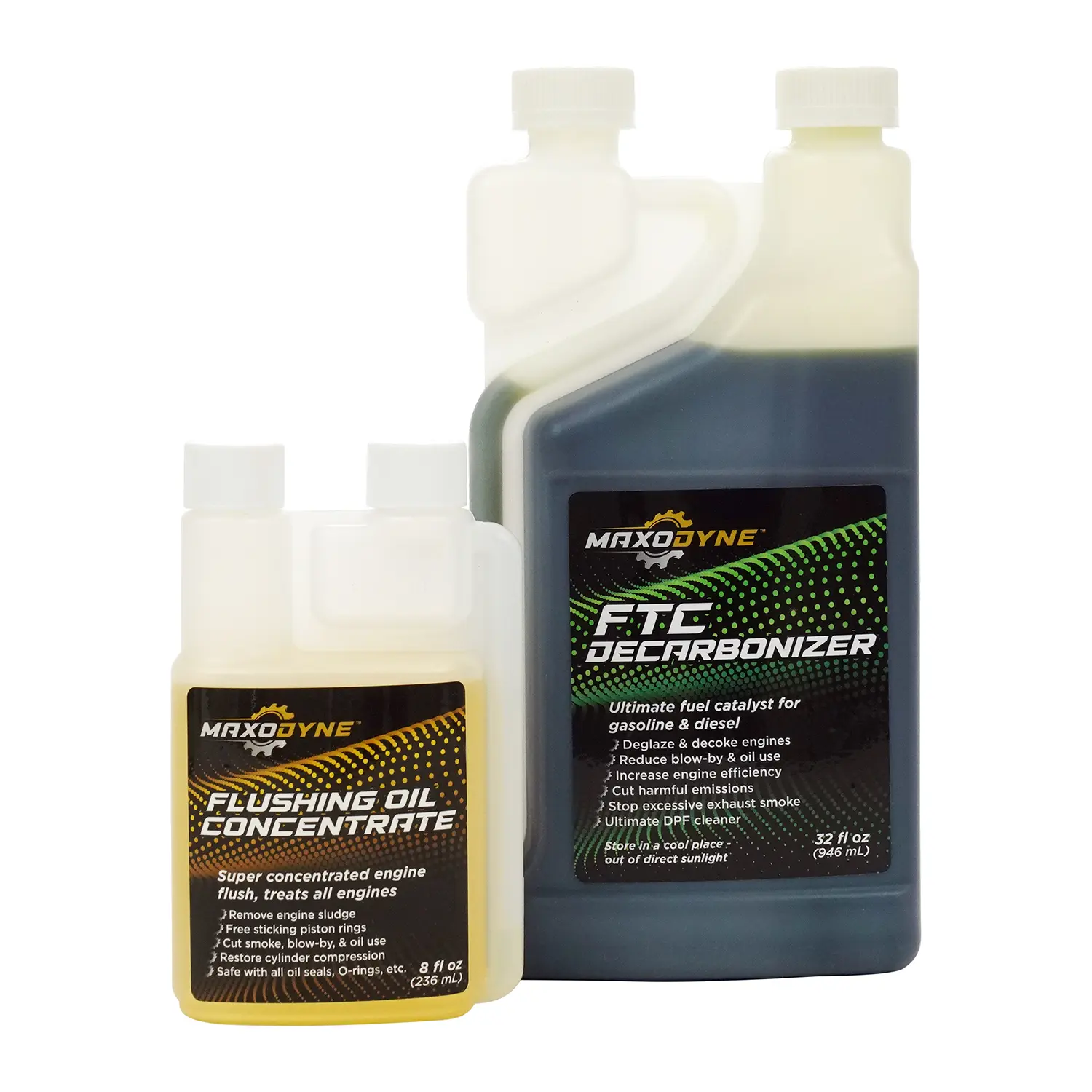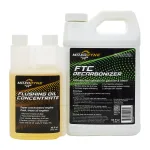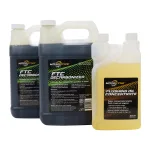Engine blow-by is the term used to describe excessive internal crankcase pressure – a result of inadequate sealing between the piston rings and the cylinder walls, particularly during the compression and power strokes of the crankshaft. During these strokes, generated compression and expansion pressures create extremely high pressure above the piston, and if the ring-to-cylinder seal is not up to standard, the escaping pressure spews into the engine crankcase, resulting in problematic blow-by.
Blow-by has usually been regarded as an indicator of mechanical wear – worn out rings and cylinders. However, the truth is that in the majority of instances, this is not the case. More often it is found that the cause of a less-than-ideal seal between the rings and the cylinder is not actual wear, but is carbon build up on the rings and in the ring grooves, and on the cylinder walls (commonly referred to as cylinder glaze). Carbon is produced during the engine’s combustion process, and what isn’t expelled through the exhaust system, builds up progressively, over time, and can be found encrusted on numerous engine components, not just rings and cylinders. Other critical components detrimentally affected by carbon build up include valves, Direct Injection fuel injectors, diesel particulate filters, turbochargers, and exhaust gas recirculation valves.
When hard carbon particles accumulate on the piston rings and in the ring grooves, two problems occur:
- The piston rings become stuck in the grooves and cannot expand sufficiently against the cylinder to seal correctly. The rings are essentially ‘cemented’ into the grooves causing loss of vital ring-to-cylinder seal, allowing pressure to pass into the crankcase.
- Compression and expansion pressure generated in the combustion chamber cannot get into the ring grooves behind the rings to force them against the cylinder. This significantly reduces the ability of the rings to contain combustion pressure, enabling the pressure to escape into the crankcase.
Cylinder glaze occurs when hard carbon particles amass in the microscopic cross-hatch grooves on the cylinder walls. Over time, the cylinder walls become mirror smooth and glazed as hard carbon in the cross-hatch grooves becomes highly polished by the reciprocating action of the piston and rings. The glazing effect on the cross-hatch grooves prevents an essential seal between the rings and the cylinder, again permitting pressure to escape into the crankcase.
Engine Blow-by – does it need a rebuild?
Excessive idling, light-load operating conditions, short run times, problematic emission control equipment, extended service periods, and a host of other conditions only exacerbate the creation of hard carbon particles during the combustion process, all adding to the onset and ever-increasing promotion of blow-by.
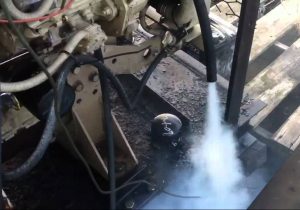 Blow-by, and it’s often-associated problems, including undue exhaust smoke, excessive oil consumption, loss of cylinder compression, and high levels of soot in the lubricating oil, is unsurprisingly the common catalyst for a complete (and expensive) engine overhaul. For a heavy truck engine, this cost could be around $30,000 including downtime, or for a mine haul truck engine it could mean costs of around $300,000 – $400,000 for repairs plus downtime!
Blow-by, and it’s often-associated problems, including undue exhaust smoke, excessive oil consumption, loss of cylinder compression, and high levels of soot in the lubricating oil, is unsurprisingly the common catalyst for a complete (and expensive) engine overhaul. For a heavy truck engine, this cost could be around $30,000 including downtime, or for a mine haul truck engine it could mean costs of around $300,000 – $400,000 for repairs plus downtime!
The longer engine blow-by is left unchecked, the more carbon deposits continue to stockpile around piston rings, ring grooves, cylinder walls, valve gear, emission control equipment, turbochargers, and other components. Operating performance starts to decline, fuel consumption increases, oil use escalates, and eventually catastrophic engine failure can occur (carbon build-up is the main cause of piston ring breakage). There is generally nothing in recommended maintenance that addresses these destructive carbon deposits, but there is a large opportunity for pro-active intervention to correct this condition before untimely and costly breakdown becomes a menacing issue.
The Solution to Engine Blow-by
Introducing Pro-active Maintenance™ measures into a service schedule greatly extends component life and significantly reduces shocking repair costs, while at the same time boosting whole-of-life reliability, performance, and efficiency.
Maxodyne Pro Maintenance Additives specializes in corrective and preventative maintenance. With over 30 years’ experience in heavy road transport and the mining industry, we have a strong focus on reducing engine blow-by and restoring lost compression and oil control in all types of engines.
Maxodyne Pro Maintenance Additives provide a very effective, easy to use, two-part package that directly addresses the root cause of engine blow-by.
One part introduces a ‘catalytic decarbonizer‘ into the fuel, which, during the combustion process, actively oxidizes (burns off) ‘top end’ hard carbon deposits exposed to the combustion flame. This action directly counters the root cause of engine blow-by by safely removing all hard carbon deposits in the entire combustion area, but especially from the compression rings and ring grooves, as well as deglazing the cylinder walls. Over time this restores correct compression ring-to-cylinder seal – enhancing compression and significantly reducing or eliminating engine blow-by.
As a bonus, turbochargers, Direct Injection injector tips, exhaust valves, diesel particulate filters, exhaust gas recirculation valves, etc. are also actively decarbonized, promoting longer, trouble free service from these components.
The other part safely dissolves, diffuses, and suspends damaging carbon and associated deposits from all lubricated areas of the engine. A remarkably effective detergent/dispersant, Flushing Oil Concentrate is an extremely effective and totally safe-to-use engine oil flush. Containing specialized detergents (not corrosive and abrasive solvents), it is probably the most effective treatment in removing harmful and performance draining sludge, hard carbon and other contaminants and deposits from oil-wetted engine components. When used as recommended, it restores full cleanliness to the entire crankcase by removing all engine sludge and other contaminants. As well as assisting in the breakdown of glaze on the cylinder walls, it unblocks obstructed oil-control rings, allowing them to once more correctly control the oil on the cylinder walls. This rejuvenating action greatly assists in reducing or eliminating excessive engine oil use and thereby overcoming one of the principal contributors to the production and escalation of engine blow-by.
The combination effect of these 2 products has proven successful even in very high mileage/high hour engines and offers a low cost means of screening engines that may otherwise appear to demand overhauling.
A low cost fix for many engines with blow-by
Around 80% of engines usually set for overhaul may have considerable service life remaining if they can be effectively decarbonized and rejuvenated with these products. Provided they are mechanically sound, blow-by levels will reduce significantly, oil use will cut back, and engine efficiency will improve, providing an increase in the effective life of the engine.
Optimizing engine life by utilizing these restorative strategies has the potential to save all kinds of vehicles or machines significant costs over the course of the ownership and operation of the engine, be it car, truck, RV, boat, tractor, earthmover, stationary engine, small and large fleets – either gasoline or diesel powered. Add to that the accompanying energy efficiency associated with improving engine operating functions.
Does FTC Decarbonizer really work? Find out here
Get maximum results and save on the price on both products – get the combination Engine Blowby Value Pack! Available in various combinations to suit different engine sizes.
Prevent an engine rebuild – use these products first!
Choose the most appropriate Engine Blowby Pack size for your particular need. 5 size choices are available – Mini, Mini Plus, Small, Medium or Large Pack
- 32 fl oz of FTC Decarbonizer
- 8 fl oz of Flushing Oil Concentrate
This pack is usually suitable for small to mid-size vehicles and machinery; cars and light trucks, tractors, small boats, stationary generators, etc. with engines up to approximately 6.0 liter engine capacity (370 cubic inch), and having up to 16 quarts (4 gallons/19 liters) oil capacity and achieving approximately 15MPG (15L/100km) or better.
- 64 fl oz of FTC Decarbonizer
- 16 fl oz of Flushing Oil Concentrate
This pack is usually suitable for mid-size vehicles and machinery; light trucks, RVs, medium tractors and machinery, boats, etc. with engines up to approximately 9.0 liter engine capacity (550 cubic inch), and having up to 32 quarts (8 gallons/38 liters) oil capacity and achieving approximately 15MPG (15L/100km).
- 1 gallon of FTC Decarbonizer
- 32 fl oz of Flushing Oil Concentrate
This pack is usually suitable for larger vehicles and machinery; medium to large trucks, large machinery, boats, etc. with engines over 9.0 liter engine capacity (over 550 cubic inch), and having up to 64 quarts (16 gallons/76 liters) oil capacity and achieving less than approximately 15MPG (15L/100km). This Small Pack is most popular with Truckers and Marine vessel operators.
- 2 gallons of FTC Decarbonizer
- 32 fl oz of Flushing Oil Concentrate
This pack is most suitable for trucks etc. that cover a lot of miles relatively quickly, e.g. long distance OTR Truckers. The 2 gallons of FTC Decarbonizer keeps these trucks on the road for a long period of time without needing to reorder as often, allowing for the full benefit of the ongoing de-carbonizing effect, ultimately removing all engine-destroying hard carbon from the combustion chamber, and promoting more efficient long-term engine performance.
- 4 gallons of FTC Decarbonizer
- 64 fl oz of Flushing Oil Concentrate
This pack is suitable for small fleet operators with up to 3 or 4 trucks or other equipment, or a combination of different types of machines, e.g. truck, excavator, dozer, crane, boat, etc.
This Pack is suitable for both gasoline and diesel engines.
(32 fl oz = 946 mL, 1 liter = 33.8 fl oz)

